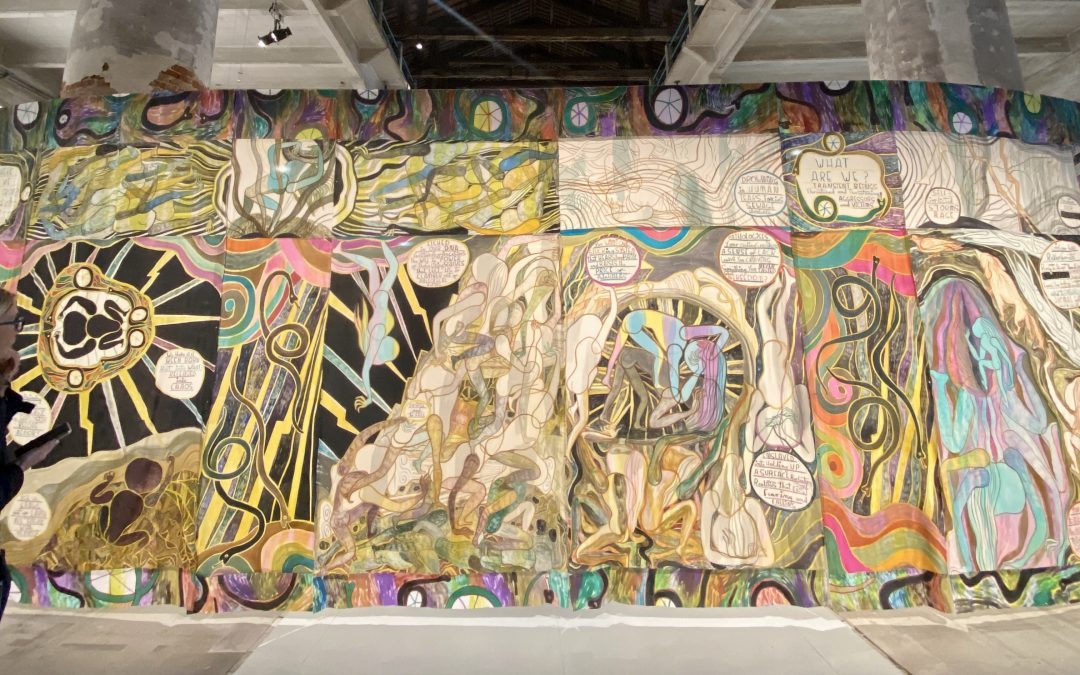Emma Talbot: a story of renaissance
Winning the Max Mara Art Prize for Women in 2020 coincides for Emma Talbot, a British artist born in 1969, with the moment when she can finally devote herself fully to what most belongs to her: art.

Emma Talbot, Biennale Arte 2022
In the interview published in issue 17 of Vanity Fair, she tells that she lost her husband at the age of 36. This unfortunate event led her to take care of her family alone, and thus to commit herself to her job as teacher for all this time.
During the tragic experienceof the coma and the death of her husband, Emma managed to find in art a meditative space just for her and her great love, a super-sensible space in which she could feel a connection.
Emma Talbot, in the same interview mentioned above, reveals: “I started drawing in hospital and continued to do so at home, after his death: fantastic creatures came out of my hand, spur-of-the-moment, situations that sprang from an imagination that I didn’t even think I had; borning from my deepest unconscious, I believe.”
In the works of this introspective artist, one can guess the nature of her work: memories and psychological projections drive her towards the translation of thoughts onto canvas.

Emma Talbot, Biennale Arte 2022
Talbot, however, not only excels in painting, but also uses the technique of drawing, animation and sculpture, with a particular fondness for the use of fabrics and textiles.
Two of her masterpieces are currently on show at the Biennale Arte 2022, curated by Cecilia Alemani, at the Arsenale.
Here she deals with two fundamental themes: the first expresses the loss but, at the same time, the hope for a recovery of the bond between man and nature. The second is a theme that strongly echoes the artist’s personal story: childbirth and the rebirth.
In Emma Talbot’s works there is not only technique and passion, but there is a story to be told: a story of renaissance.

